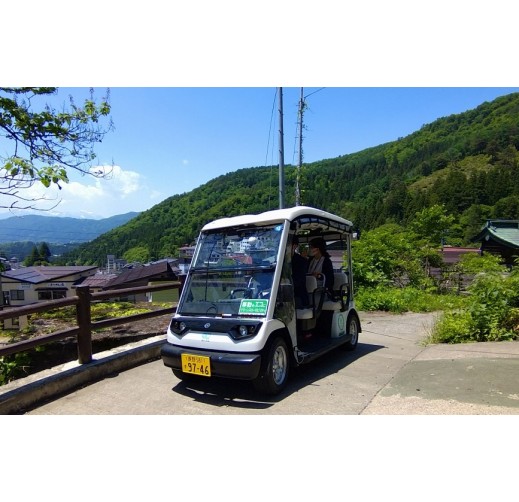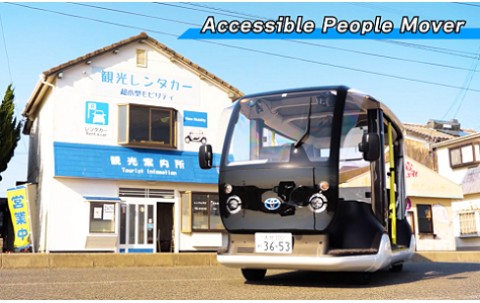Green Slow Mobility
Technology / Service Summary
Green Slow Mobility is a small mobility service that utilizes electrified vehicles that can travel on public roads at speeds of less than 20 kilometers per hour. By using power generated from sustainable sources such as solar or wind power, it is possible to achieve decarbonized transport.
Purpose
Based on the Paris Agreement that was concluded in 2015, the aim is to reduce greenhouse gas emissions to essentially zero by the latter-half of the 21st century within a global framework. In Japan, the aim is to achieve a carbon neutral, decarbonized society with greenhouse gas emissions at zero overall by 2050.
At the MLIT, Green Slow Mobility aims to solve various transport problems in local areas, such as the securing of transport services where societal aging is advancing and the development of new sightseeing mobility for tourist attractions. Simultaneously it also aims to spread low carbon mobility in local areas.
Feature
Golf carts have been permitted to drive on public roads since 2014, and societal pilot tests have finally begun. Since FY2018, efforts have been made to increase the promotion of Green Slow mobility through national verification experiments, vehicle purchasing subsidies, etc.
The Eco-Mo Foundation continues its efforts to promote the widespread adoption of green slow mobility by conducting test runs and demonstration surveys for the utilization of green slow mobility in remote island areas using experimental vehicles owned by the foundation. Additionally, the foundation organizes training sessions, provides operational know-how, and continues its efforts to support the utilization of green slow mobility.
Effect
The waning of public transport in provincial areas of Japan has produced a greater environmental impact as the result of growing use of personally-owned vehicles and created mobility problems for senior citizens unable to drive.
Green Slow Mobility have little environmental impact and can coexist harmoniously with pedestrians and cars due to their low maximum speed of under 20km/h. Hopes are high for the potential these vehicles have to address environmental impact and reduced senior mobility problems when used for living activities within communities and as a means of transport in tourist destinations, helping achieve an even lower carbon society.
Controlled Substance
Reference
Applicable Regions / Countries
- Japan
- Southeast Asia
- Central/South Asia
- China/ East Asia
- Middle East
- Africa
- Oceania
- Europe
- Central/South America
- ASEAN countries
Indonesia,Cambodia,Singapore,Thailand,Philippines,Brunei Darussalam,Viet Nam,Malaysia,Myanmar,Lao PDR
Reference URL
Related SDGs Goals
- 7. Affordable and Clean Energy
- 11. Sustainable Cities and Communities






